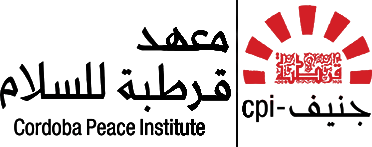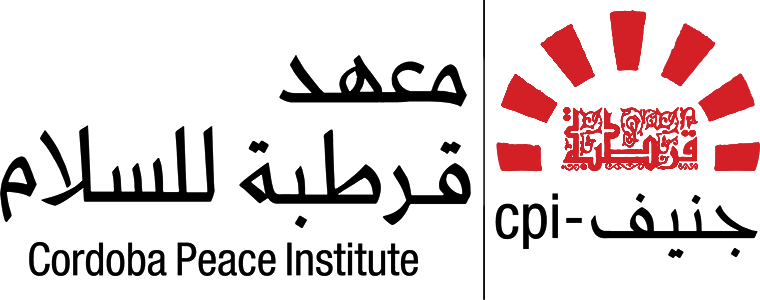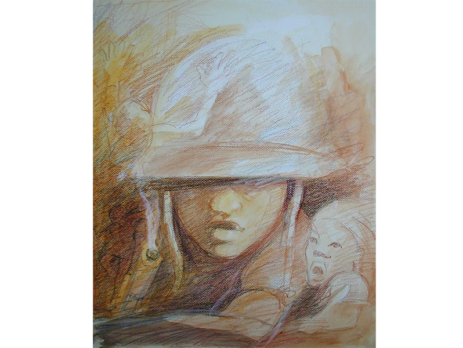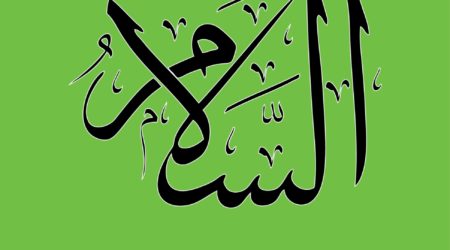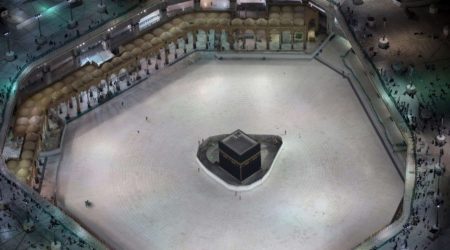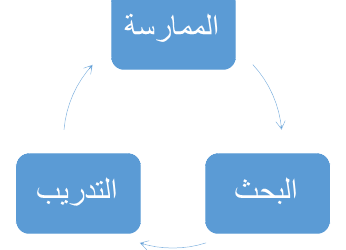Gender issues affecting Children Associated to Armed Forces and Groups in Northeast Nigeria

The whole Lake Chad basin is affected by the insurrectional jihadist dynamics of the armed group Boko Haram (BH), recently weakened by the incursion of the Islamic State West African Province (ISWAP) and the reported assassination of its leader, Abubakar Shekau (1). Northeast Nigeria is fertile ground for massive violations of human rights, children’s rights, and International Humanitarian Law, particularly affecting the condition of women and girls in conflict areas. Indeed, thousands of children and more especially girls are kidnapped, enrolled in armed groups, abused, and reduced to the status of slaves..
by Meg-Ann Lenoble
The whole Lake Chad basin is affected by the insurrectional jihadist dynamics of the armed group Boko Haram (BH), recently weakened by the incursion of the Islamic State West African Province (ISWAP) and the reported assassination of its leader, Abubakar Shekau (1). Northeast Nigeria is fertile ground for massive violations of human rights, children’s rights, and International Humanitarian Law, particularly affecting the condition of women and girls in conflict areas. Indeed, thousands of children and more especially girls are kidnapped, enrolled in armed groups, abused, and reduced to the status of slaves. In a context of chronic poverty, regular and prolonged displacement, massive destruction of family support, deterioration of social links, and a crucial lack of educational structures and a very weak local presence of the state apparatus, minors find themselves in a situation favorizing kidnappings and enrollment by armed groups. While the politicization and instrumentalization of gender issues is a major geopolitical challenge of the contemporary world, it is relevant to question the impact of gender in the protection situation of Children Associated with Armed Forces and Groups (CAAFAG) in Northeast Nigeria.
Some numbers
Since the beginning of the conflict, UNICEF has identified more than 6000 children (2), among whom more than 50% girls, recruited, kidnapped, killed, or victims of violent attacks by armed groups. Half of these were victims of gender-based violence (GBV). In 2018, 1947 children (1596 boys and 351 girls) were recruited and used by non-state armed groups among whom 1646 by the Civilian Joint Task Force and 301 by “BH” (3). It has also been recorded that 518 minors (304 boys, 86 girls, 28 unknown) were deprived of liberty by the Nigerian army, on suspicion that they or their parents had sworn allegiance to “BH” (4). This number had greatly decreased compared to previous years and the authorities freed 2200 children out of 3600, among whom 1617 girls, between January 2013 and March 2019 (5).
CAAFAG, victims and/or child soldiers?
In a patriarchal context of extreme poverty, strong religious beliefs, food insecurity, lack of education, lack of access to basic services, and commonplace violence against minors (6), many children join “BH” to flee their social condition, to have access to education and for financial autonomy. Hilary Matfess’ research (7) shows that the enrollment of many children with “BH” is conditional on the procurement of a loan to develop a micro-business, or the hope of access to it later on (8). The prospect of gaining social status, an income and a wife allows for the constant attraction of new recruits.
Besides, through the different testimonies gathered, she emphasizes that girls, victims of kidnaping, must convert to the religious ideology promoted by “BH”. They are then forcibly married to act as wives, sex slaves, and procreation tools in order to ensure the continuity of the lineage and of the doctrine. If they refuse to convert, they are simply killed or used for suicide attacks (9). Other girls and teenage girls seem to be given as gifts to “BH” by families who have sworn allegiance to the group and believe in its ideology and the promising future of their children in serving the group (10).
Different studies on the subject also reveal that the role of girls and teenage girls in the conflict has evolved and that, from the status of victims, they can also take on the role of actors. They are in some cases inclined to swear allegiance to “BH”, which offers opportunities for women to achieve their own goals. Looking for social status through marriage and motherhood, financial security and education, while often being separated from their family, they aspire to join and commit themselves to the moral and religious values defended by “BH”. Indeed, early or child marriage is a major part of indoctrination: it is an adaptation mechanism, a survival strategy that is unavoidable for girls and their parents who want to protect their daughters from sexual violence and kidnappings, thus ensuring that the honor of the family endures (11). Besides, the adoption of the Shariah seems to offer a number of “progressive measures” in regard to the treatment that was initially offered to women in this region. They therefore have access to a fair dowry, to a koranic education, and do not have to be involved in working the land, as this activity is forbidden to women.
Young and teenage girls, a formidable instrument of warfare
The “innocence” embodied by young and teenage girls makes them effective weapons: they could initially freely circulate in government-controlled areas as informants, messengers, recruiters, traffickers and sometimes even fighters (12). With the strengthening of efforts in the fight against “terrorism”, the female figure has become an essential instrument of warfare to act in urban areas. Constituting a large pool for recruitment, young and teenage girls started being used for suicide attacks from 2014 onwards and were transformed into human bombs. Between 2011 and 2016 (13), more than half of suicide attacks were perpetrated by female individuals wearing explosive vests (14), some of whom were 7 years old and more than 60 of them were less than 15 years old.
Young and teenage girls are also precious for “BH”, which uses them as bargaining chips. Several negotiations have led to the proposition to release girls in exchange for families and members of “BH”. Indeed, “BH” understands the value of these girls and has managed to optimize the media attention brought by #bringbackourgirls, created due to the kidnapping of the Chibok girls. The media attention, exacerbated by the mobilization of personalities like Michelle Obama, first lady of the USA at the time, and by the Pope, increased political pressure over the negotiation. Moreover, international concern about the place of women and girls, which is now a societal, political, economic and humanitarian question in developing countries, has given visibility to “BH” on the international stage. The capacity of the Nigerian government to solve the crisis and to negotiate with “BH” is therefore scrutinized.
Legal protection and programmatic response
Despite the existence of legal protection instruments based on international texts and conventions (15) adopted by the highest international governance authorities and by the government of Nigeria, we observe their non-ratification (16) by states in northeast Nigeria (Sokoto, Adamawa, Bauchi, Kano, Katsina, Kebbi, Borno, Gombe, Yobe, and Zamfara), mainly governed by the Sharia, reintroduced in 1999 as a set of civil and penal laws governing these states. The superposing of Islamic law over national law leads to the non-implementation and non-application of legal frameworks existing in conflict areas. One of the major consequences for girls is the difference in interpretation of the legally prescribed age of majority versus the attainment of puberty, associated with majority in northeast Nigeria. States that are the most affected by children rights violations have the highest early marriage (17) and maternal mortality rates of the country, thus making Nigeria one of the most dangerous countries in which to give birth. This difference of assessment concerning the status of the child/adult is therefore crucial to ensure a fair and holistic protection for boys and girls associated to armed groups.
From an operational point of view, the government has launched since 2014 several programs aiming to ensure the demobilization, reintegration and reinsertion (DRR) of repentant ex-fighters and “BH” members. The Operation Safe Corridor program implemented since 2016 and financed by the European Union seems to be the most holistic one. It combines the treatment of the religious ideology and the politico-economic concerns of the ex-fighters with the post-traumatic management that follows their enrollment with “BH”. This approach would allow the deep treatment of the causes and consequences of the radicalization of these individuals and would facilitate over the longer term their reintegration into communities by lowering the risk of potential recidivism. Nonetheless, beyond the recent controversies (18) related to the profiling process of “beneficiaries” who turned out not to be ex-fighters of “BH”, we notice the invisibility of women. Indeed, left to occupy reproductive and housekeeping functions, the female figure does not seem to be directly targeted even though the primacy of its role in peace and international security has been largely demonstrated (19). Furthermore, the militarization of the process involving detention conditions of CAAFAG, described as inhumane, have also generated mediatized denunciations from human rights organizations. For instance, some girls who managed to escape from “BH” were found by soldiers who took advantage of their vulnerability to commit a number of abuses. Finally, the reintegration process, in an area imbued with strong animist and religious beliefs is a vector of stigmatization for children born in the ranks of “BH”, as well as for girls-mothers and boys reinserted into their communities.
Finally, the inclusion of the gender question is central for an accurate understanding of the phenomenon of CAAFAG, and more especially of the situation of girls. These girls and boys determine the future of the armed groups present in the area and therefore impact the political-security situation of the country and more generally of the Lake Chad basin region. In addition to political initiatives, actions to prevent violent extremism are essential for reconciliation and sustainable stabilization. Intracommunity mediation and negotiation mechanisms, the elaboration and diffusion of alternative discourses to extremism and the reinforcement of local socioeconomic opportunities, taking into account the gender dimension, are indispensable for the protection of the most vulnerable. A gender-based approach to this question could allow the assessment of reintegration issues within these communities and the potential recidivism or radicalization happening in reaction to the different challenges encountered by these children.
Meg-Ann Lenoble
Reference
(1) https://humangle.ng/what-shekaus-death-means-for-security-in-nigeria-lake-chad
(2) Article 1 of the UNICEF International Convention on the Rights of the Child states that “A child is defined as any human being under the age of eighteen, unless national law grants majority earlier. “
(3) UN General Assembly Security Council, 73rd session, Promotion and protection of the rights of children, 20th June 2019
(4) https://www.un.org/ga/search/view_doc.asp?symbol=S/2019/509&Lang=E
(6) The economic burden of violence against Children, Nigeria Study, Ministry of Budget and National Planning and Federal Ministry of Women Affairs and Social Development, March 2019
(7) Hilary Matfess is a researcher at the “Center for Democracy and Development” in Abuja, Nigeria and at the Nigeria Social Violence Project of the Johns Hopkins School of Advances International Studies. She published a book entitled: Women and the War on Boko Haram – Wives, Weapons, Witnesses
(8) Women and the War on Boko Hararm – Wives, Weapons, Witnesses by Hilary Matfess
(9) https://www.nytimes.com/2020/03/13/world/africa/Nigeria-Boko-Haram-bomber.html
(11) Non-consensual sexual relations between spouses are not considered to be sexual or emotional violence and will not cause any damage to the family’s reputation – https://www.unicef-irc.org/publications/pdf/digest7f.pdf
(12) « Women as Symbols and Sword in Boko Haram’s Terror » by Mia Bloom and Hilary Matfess, Institut for National Strategic Security
(13) https://www.tandfonline.com/doi/full/10.1080/08974454.2019.1629153?scroll=top&needAccess=true
(14) https://www.nytimes.com/2020/03/13/world/africa/Nigeria-Boko-Haram-bomber.html
(15) In July 1990, the African Union Charter on the Right and Welfare of the Child (CRWC), based on the international convention on the rights of the child of the United Nations of November 20, 1989, was adopted by the African Union. This text, signed by Nigeria, was ratified on July 23, 2003. As of July 31, 2003, Nigeria had already promulgated these principles in a law called “The Child Rights Act (CRA)”
(16) https://guardian.ng/opinion/the-nigerian-child-and-national-policies/
(17) https://www.amnesty.fr/focus/mariage-precoce
(18) International Crisis Group, Briefing n°170/ Africa, 19th March 2021, “An Exit from Boko Haram? Assessing Nigeria’s Operation Safe Corridor”
(19) UN Security Council resolution 1325 on women and peace and security (2000)


